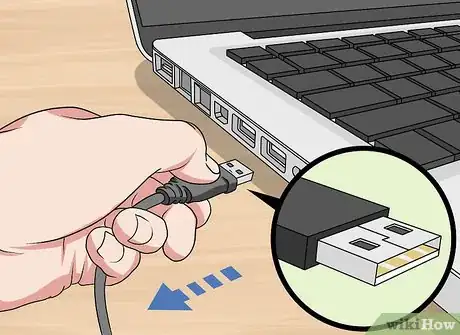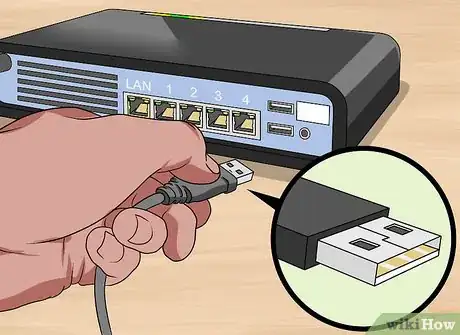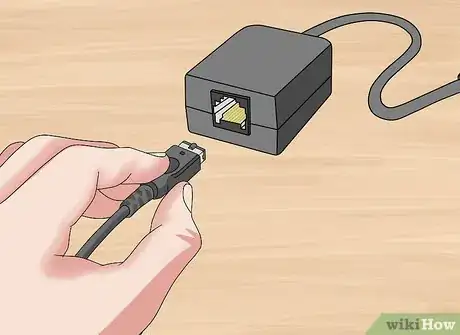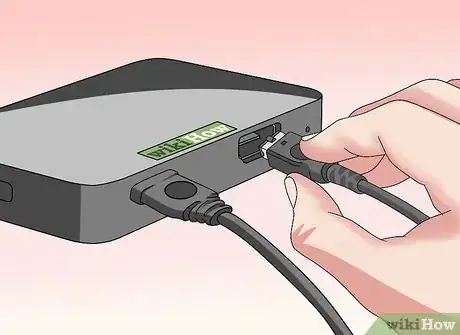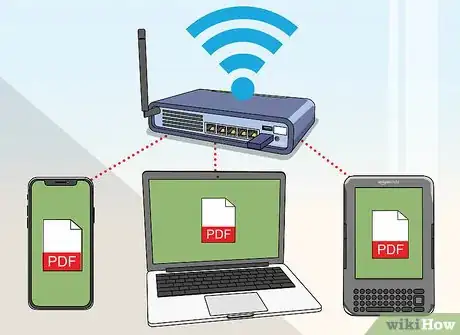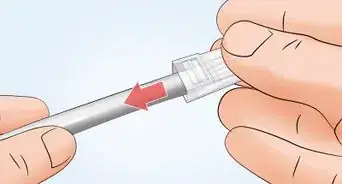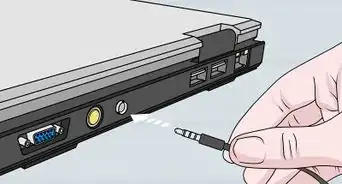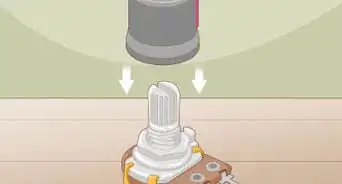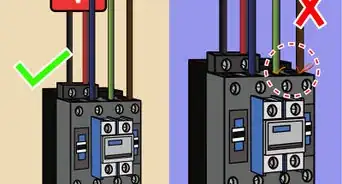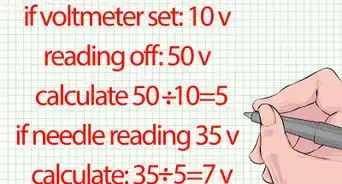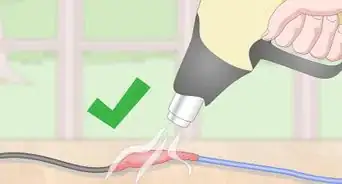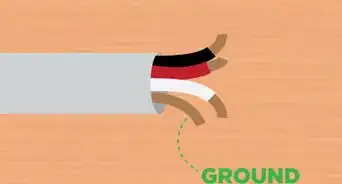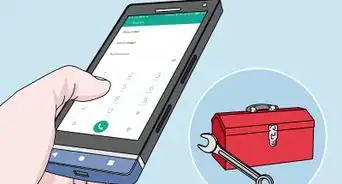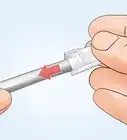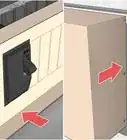Increase the length of a too-short USB cord with a variety of affordable adapters
X
wikiHow is a “wiki,” similar to Wikipedia, which means that many of our articles are co-written by multiple authors. To create this article, 10 people, some anonymous, worked to edit and improve it over time.
This article has been viewed 228,254 times.
Learn more...
Although standard USB cables typically provide fast, secure data transfer between different devices, they are usually fairly short. This is because standard USB connections begin to lose their effectiveness the longer the distance between each device. However, devices like extension cables, extenders, network converters, and wireless USB allow you to expand the range of your USB-connected peripherals. This guide describes how to use each of these devices.
Steps
Method 1
Method 1 of 4:
Extending a USB Connection With a USB Extension Cable
-
1Disconnect one end of your standard USB cable. This end is typically connected to your computer. This end is called the "A" connector. The almost square end is called "B". It looks kinda like a B.
-
2Hook the male end of the standard USB cable into the female end of the extension cable.Advertisement
-
3Connect the male end of the extension cable to the device that is furthest away. The male ends of both the standard and extension cables are interchangeable.
- USB extension cables are typically suitable to support connections that are 9.8 feet (3 m) or less in distance. Extension cables come with single and multiple USB port support, depending on your need.
Advertisement
Method 2
Method 2 of 4:
Extending a USB Connection With a USB Extender
-
1Connect the extender's transmitter to a USB port on your computer. Hook up one end of an Ethernet cable to the converted port on the other end of the transmitter.
-
2Run your standard USB cable between your peripheral device and the extender's receiver. Take the other end of the Ethernet cable and plug it into the receiver's converted port.
- USB extenders are generally able to support distances of up to 164 feet (50 m). The length depends on the length of Ethernet cable that you use. Ethernet cables can transfer data further distances than typical USB cables without having the data transfer deteriorate.
Advertisement
Method 3
Method 3 of 4:
Extending a USB Connection With a USB Over IP Converter
-
1Disconnect one end of your standard USB cable. Hook it into the USB port on the IP converter.
-
2Connect an Ethernet cable to the Ethernet port on the IP converter. Hook the other end of the cable into a port on your network device.
- USB over IP devices should be used when you want to connect your USB device to a network. This will allow every other device on the network to access it. Distance depends on the length of both the USB cable and Ethernet cable used.
Advertisement
Method 4
Method 4 of 4:
Extending a USB Connection With Wireless USB
-
1Connect the wireless transmitter to a hub device. Hub devices are typically computers that connect to a variety of other devices in close proximity.
-
2Set permissions on all of your devices. Allow the USB signal to access all the devices that require it.
- Wireless USB connections allow multiple wireless devices in a close proximity to network and use a device connected directly to the wireless transmitter. These typically support distances of 9.8 feet (3 m) but can be extended beyond that. It is not recommended to exceed 32.8 feet (10 m).
Advertisement
Community Q&A
-
QuestionHow do I connect USB2.0 Pen Drive with a ceiling mount projector for display content? The distance is approximately 12 meters.
 Community AnswerIf you need to connect a pen drive onto a projector, check the rear I/O for a USB port, then insert the drive. You can also buy a USB extender which will allow you to plug it in from far away.
Community AnswerIf you need to connect a pen drive onto a projector, check the rear I/O for a USB port, then insert the drive. You can also buy a USB extender which will allow you to plug it in from far away.
Advertisement
About This Article
Advertisement
